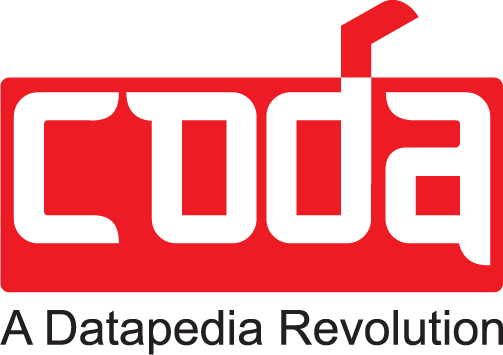SAP ECC vs. S/4HANA has become a crucial discussion as organizations prepare for SAP ECC’s end-of-support deadline in 2027. Businesses must modernize their ERP systems to stay competitive. While SAP ECC has been a trusted enterprise resource planning (ERP) solution for decades, it is now being phased out in favor of SAP S/4HANA, a more advanced, real-time ERP platform.
For industries like Oil & Gas, Manufacturing, Utilities, Real Estate, Marine & Ports, Healthcare, Banking, Government, Defense, EPC, and Aviation, transitioning to SAP S/4HANA is no longer a choice but a necessity.
This blog post explores the key differences between SAP ECC and SAP S/4HANA, their impact across industries, and why enterprises in India, GCC (UAE, Saudi Arabia, Qatar, Oman, Kuwait, Bahrain), and the Far East (China, Japan, South Korea, Taiwan, etc.) must act now to embrace SAP’s intelligent ERP.
What is SAP ECC?
SAP ECC (ERP Central Component) has been the backbone of enterprise operations for decades. Running on third-party databases like Oracle, IBM DB2, and Microsoft SQL Server, it follows a client-server architecture with a transactional processing approach.
Key Features of SAP ECC:
- Supports modules like Finance (FI), Materials Management (MM), Sales & Distribution (SD), Production Planning (PP), and Human Capital Management (HCM).
- Uses SAP GUI as the primary interface.
- Separate tables for different data types (e.g., Customer Master, Vendor Master).
- Complex batch processing for large data sets.
- Optional material ledger functionality.
While SAP ECC remains reliable, it struggles with data latency, complex integrations, and high operational costs, making it less efficient for modern enterprises.
What is SAP S/4HANA?
SAP S/4HANA (SAP Business Suite 4 HANA) is an intelligent, in-memory ERP designed for real-time data processing. Unlike ECC, it exclusively runs on the SAP HANA database, enabling lightning-fast transactions and analytics.
Key Features of SAP S/4HANA:
- In-memory database processing for real-time insights.
- Simplified data model, reducing table complexity.
- Fiori-based intuitive UI, replacing SAP GUI.
- Embedded AI and automation for predictive analytics.
- Advanced ATP (gATP) for supply chain optimization.
- Business Partner Model, merging customer and vendor master data.
SAP S/4HANA is a complete digital transformation.
Case Study:
Key Differences SAP ECC vs. S/4HANA
The table below summarizes the major differences:
| Feature | SAP ECC | SAP S/4HANA |
|---|---|---|
| Database | Oracle, IBM DB2, MS SQL, etc. | SAP HANA (In-memory) |
| User Interface | SAP GUI | Fiori (Web-based UI) |
| Processing Speed | Batch processing, slower response | Real-time analytics & transactions |
| Data Model | Complex tables, redundancy | Simplified, reduced table count |
| Material Ledger | Optional | Mandatory |
| Customer & Vendor Master | Separate entities | Unified as Business Partner |
| Pricing Table | KONV table used | PRCD_ELEMENTS table introduced |
| Reporting | BW system required | Embedded analytics in S/4HANA |
| Output Determination | NACE | Moved to BRF+ |
| ATP (Available-to-Promise) | Standard ATP | Advanced ATP (gATP) |
Why Businesses in India, GCC & Far East Must Migrate to S/4HANA Now
SAP will end support for SAP ECC by 2027, meaning businesses that delay migration risk security vulnerabilities, higher maintenance costs, and competitive disadvantages.
Industry-wise Benefits of S/4HANA Migration
1. Oil & Gas, Utilities, and Manufacturing
- Real-time production insights reduce downtime.
- Predictive maintenance minimizes unplanned shutdowns.
- Advanced inventory management prevents material wastage.
2. Healthcare & Lifesciences
- Improved patient data analytics enhances decision-making.
- Faster billing cycles optimize revenue.
- AI-driven supply chain management ensures timely deliveries.
3. Real Estate & Construction
- Streamlined procurement improves material tracking.
- Project cost control enhances profitability.
- Automated compliance tracking reduces risks.
4. Banking, Government & Defense
- Advanced fraud detection using AI-driven analytics.
- Secure financial transactions with in-memory computing.
- Regulatory compliance automation simplifies audits.
Challenges of Migrating to SAP S/4HANA
While the benefits of SAP S/4HANA migration are undeniable, businesses must prepare for:
- Customization gaps—ECC customizations may not be directly transferable.
- Workforce training—Teams must be trained on SAP Fiori UI.
- Data cleansing—Duplicate records need to be consolidated before migration.
To ensure a smooth migration, organizations should partner with experienced SAP S/4HANA consultants.
Are you ready for SAP S/4HANA? Let our expert consultants help you design a migration roadmap that aligns with your business goals.

Free SAP S/4HANA consultation
FAQs on SAP ECC vs. S/4HANA
1. What happens if we don’t migrate from SAP ECC to S/4HANA?
After 2027, SAP will discontinue support for ECC, increasing security risks, compliance challenges, and operational inefficiencies.
2. How long does it take to migrate from ECC to S/4HANA?
Depending on the data volume and customization complexity, migrations typically take 6-18 months.
3. Can small and medium businesses (SMBs) migrate to SAP S/4HANA?
Yes! SAP offers cloud-based S/4HANA solutions, making it cost-effective for SMBs.
4. Does SAP S/4HANA support third-party integrations?
Yes, S/4HANA seamlessly integrates with third-party applications via SAP Business Technology Platform (BTP).
5. What are the different deployment options for SAP S/4HANA?
Businesses can choose between:
- On-Premise – Full control over infrastructure.
- Cloud (Public/Private) – Scalable, cost-efficient.
- Hybrid – A mix of both.
Final Thoughts
SAP S/4HANA is not just an upgrade—it’s the future of enterprise resource planning. With faster processing, AI-driven insights, and a simplified data model, businesses in India, GCC, and the Far East must act now to remain competitive.
Need a seamless SAP S/4HANA migration strategy to future-proof your ERP system!?



